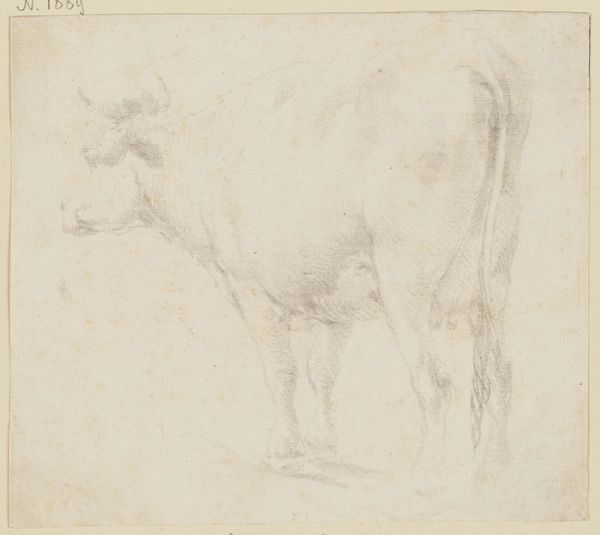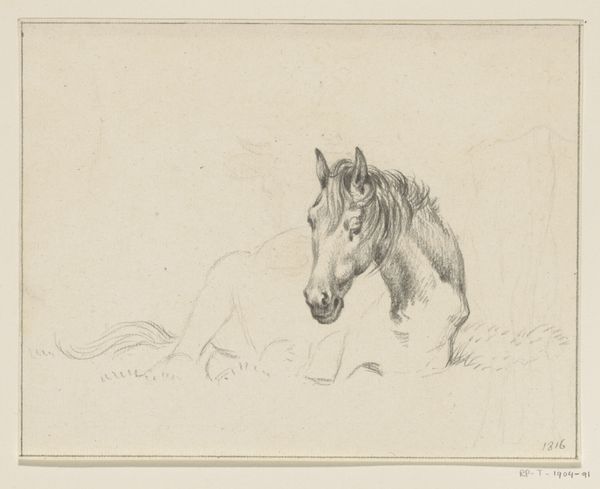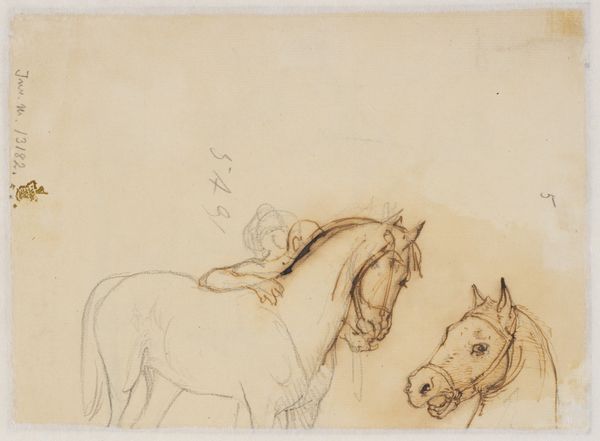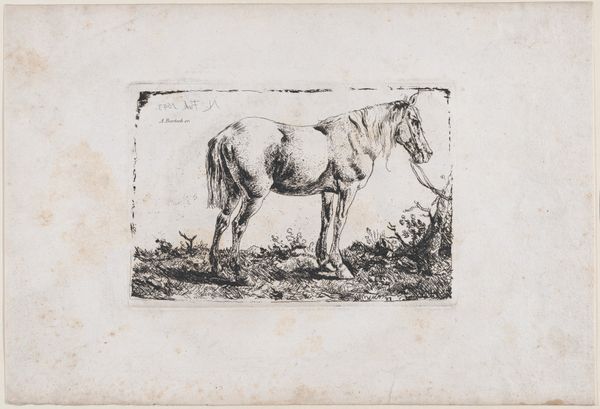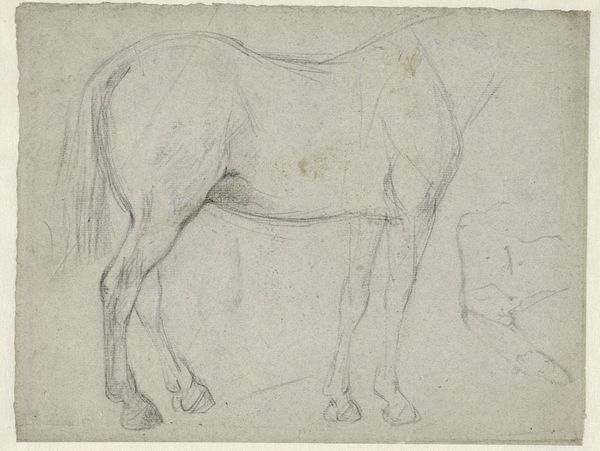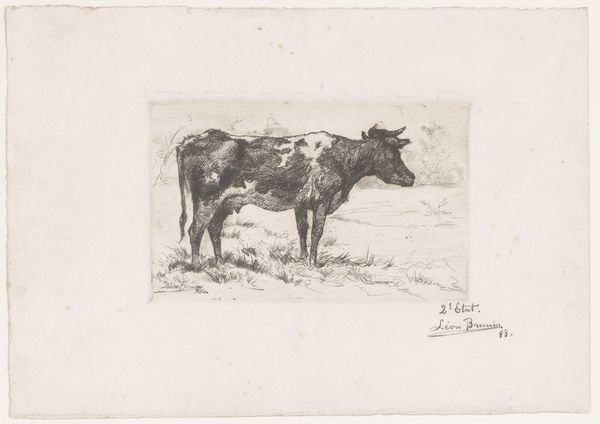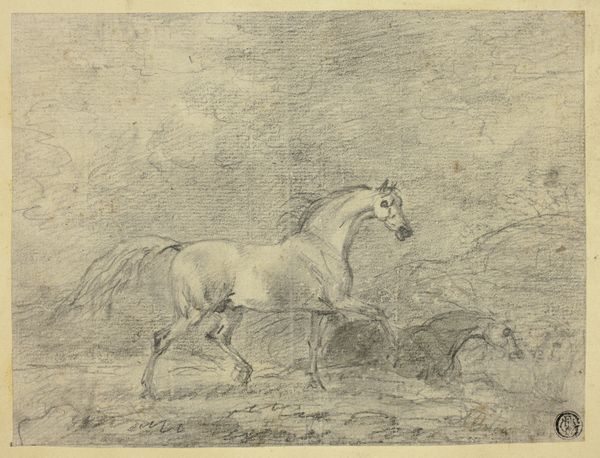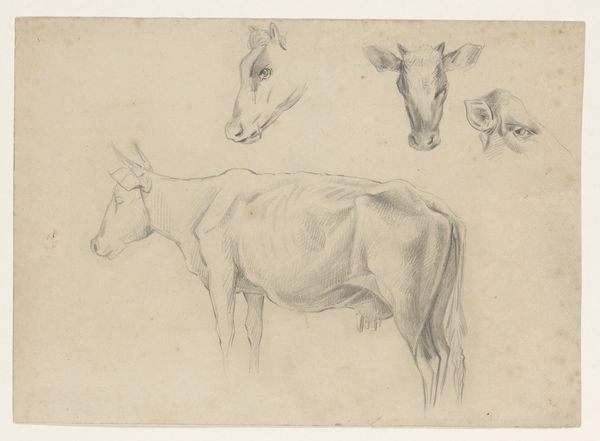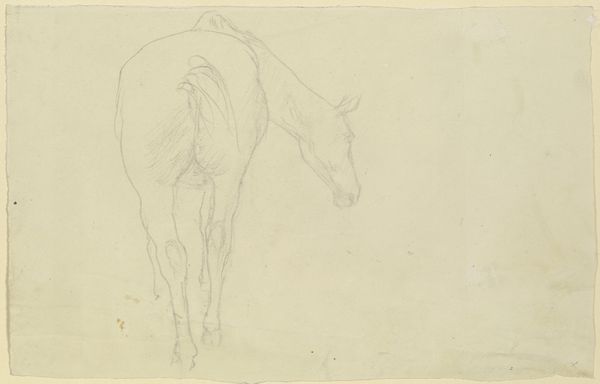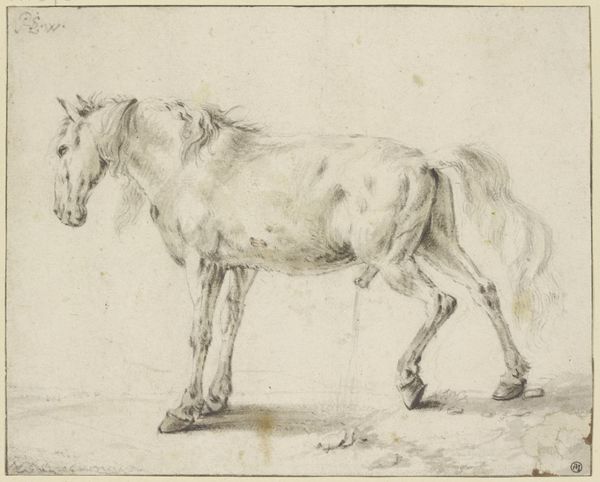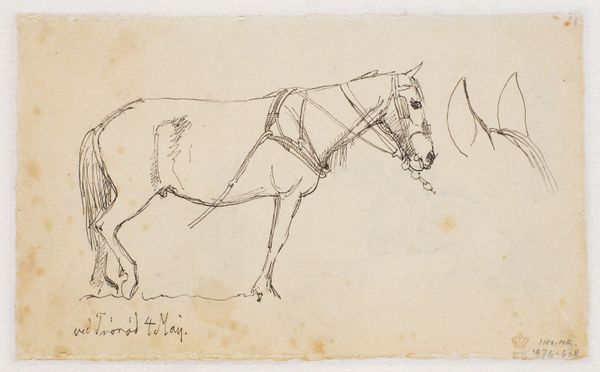
Dimensions: height 105 mm, width 149 mm
Copyright: Rijks Museum: Open Domain
Curator: Here we have David Alphonse de Sandoz-Rollin's pencil drawing, "Ezel," dating from between 1750 and 1809. It’s a delicate work on paper. Editor: There’s something immediately vulnerable about it, isn't there? The almost translucent quality, the thinness of the lines – the donkey looks quite forlorn and exposed. Curator: That speaks to its roots in Romanticism, wouldn't you agree? There's this interest in the emotional experience, often linked to nature and even the animal kingdom. It isn’t just a simple depiction. Editor: Of course, it's a study rather than a finished piece, judging by the somewhat blurred landscape that fades behind the primary animal, but there’s a definite power in its incompleteness, revealing something about the practice and function of sketches. You see so clearly the hand of the artist, trying to grasp the form, the fleeting quality. It also invites empathy. This could very well serve as a preliminary drawing for another bigger piece of work, but now serves another, separate, artistic purpose. Curator: And it’s worth thinking about how the figure of the donkey itself might have been read at the time. Donkeys often appeared in genre painting, sometimes imbued with allegorical weight—patient servitude or perhaps, depending on the context, stubbornness. Editor: So its symbolic weight depends very much on the observer. Today it could just suggest to some people a connection to farming, work. Curator: The Romanticists would have appreciated the connection to the rural environment. I see this work of Sandoz-Rollin in a very definite historical context: one of country and town, of man's work in natural life. This one appears more focused on the sheer presence and animal state of a being on its own, not performing tasks for people in its environment. That being said, the incompleteness hints at the human involvement; there would always be an environment beyond and within which it acts. Editor: It definitely brings that out: a deep sympathy that remains in what you call its "presence." Thanks for sharing this quiet sketch. Curator: A privilege! Thanks for joining me today.
Comments
No comments
Be the first to comment and join the conversation on the ultimate creative platform.
